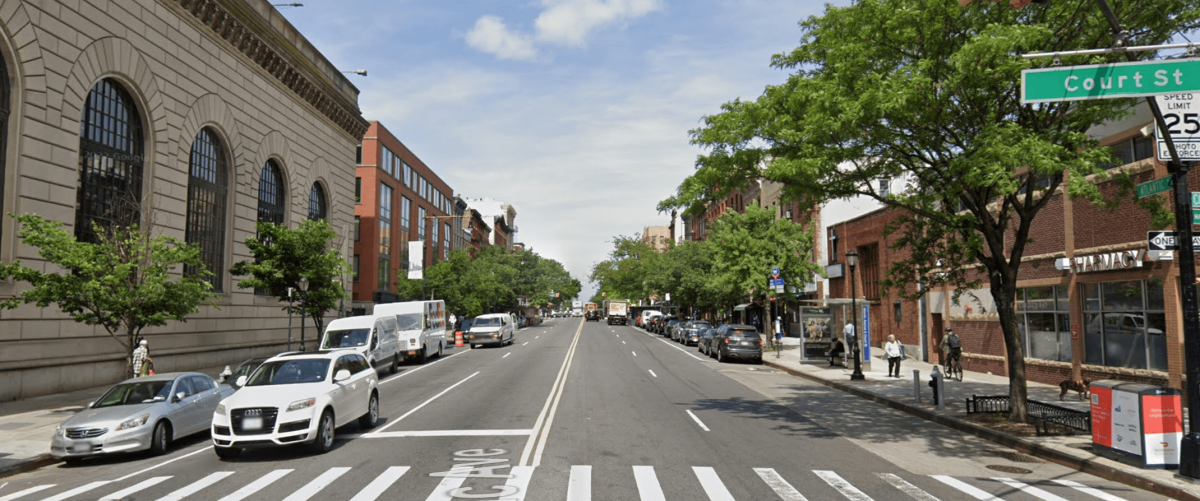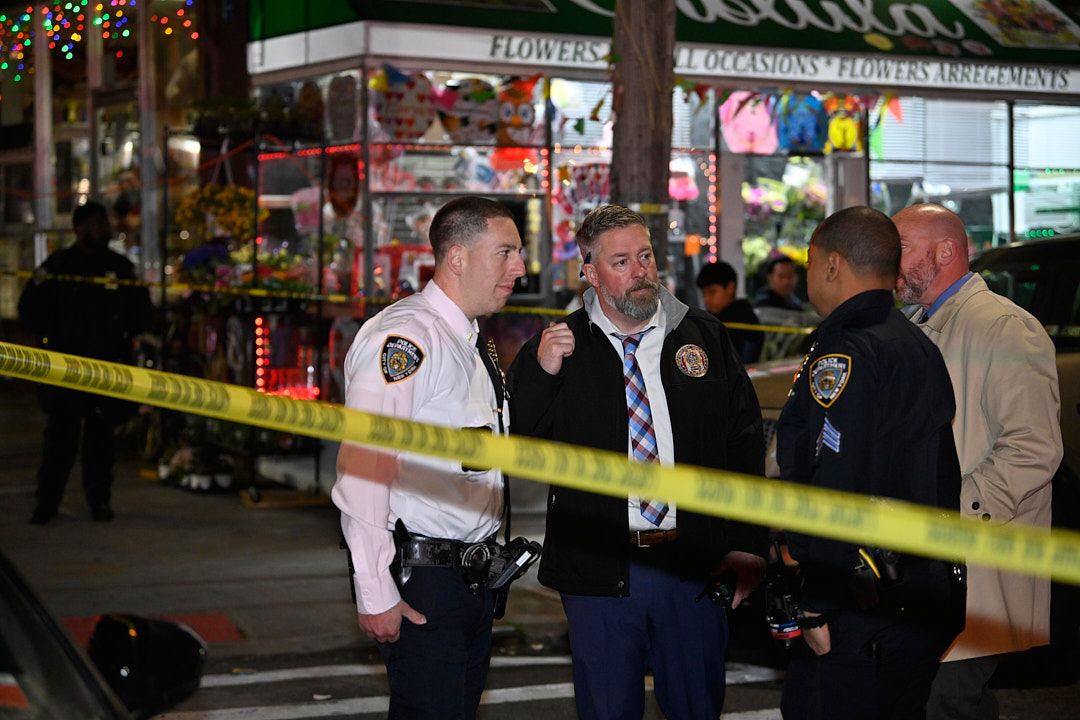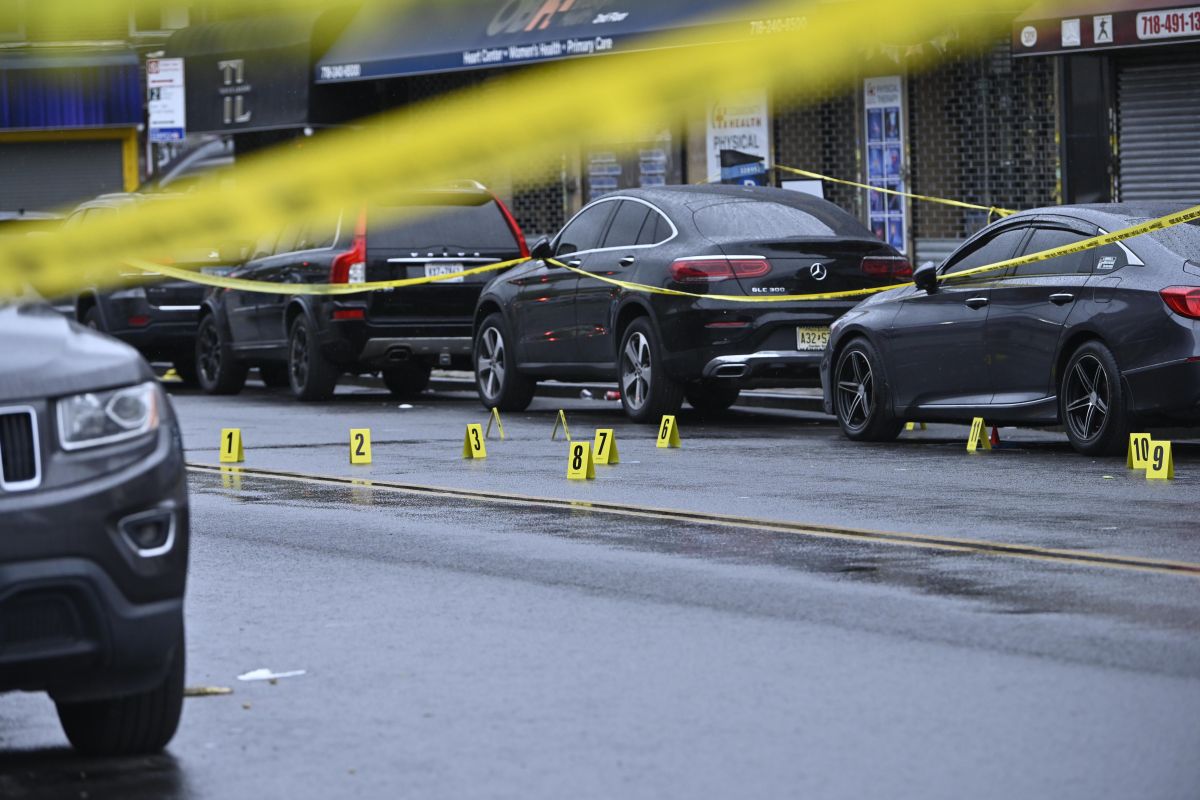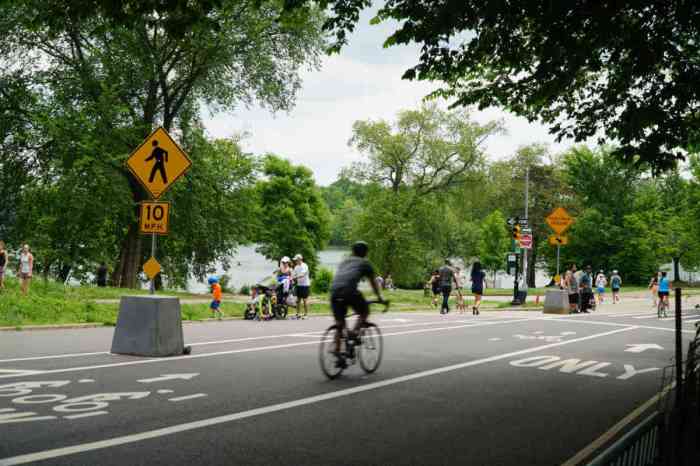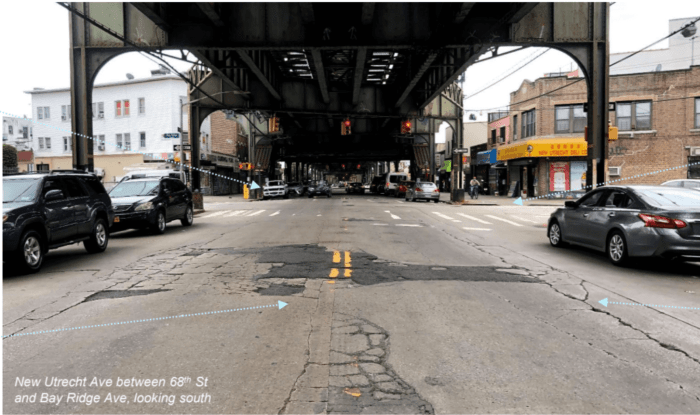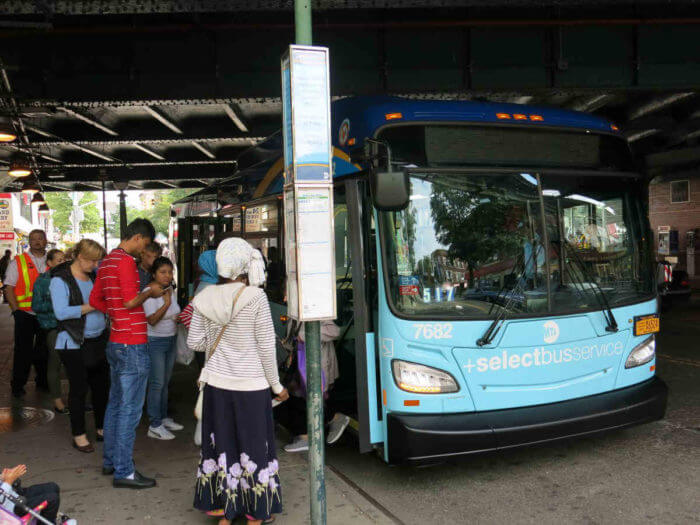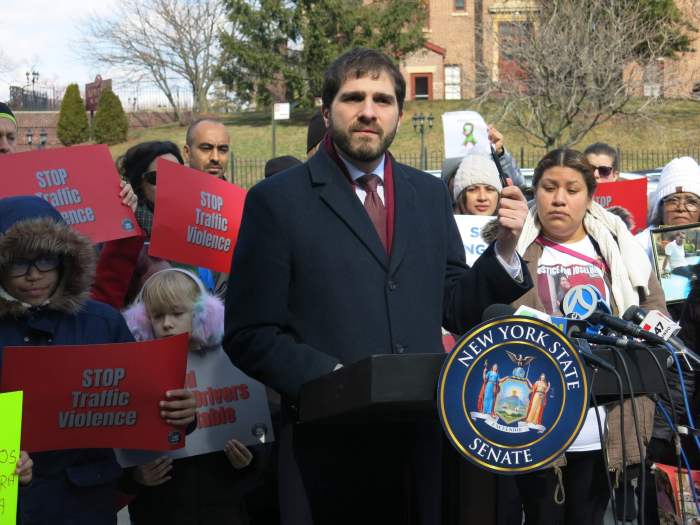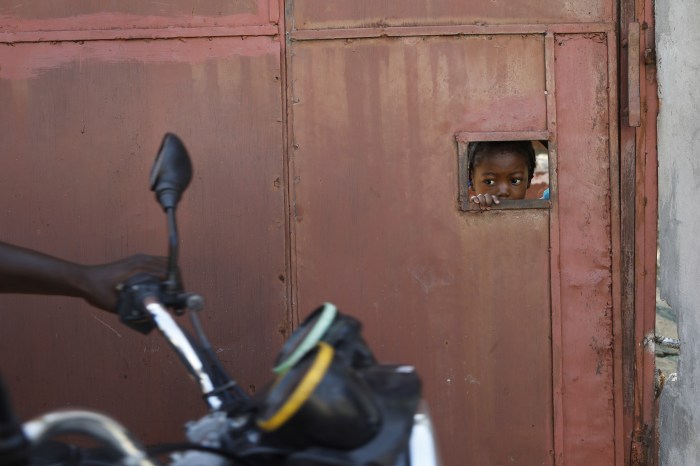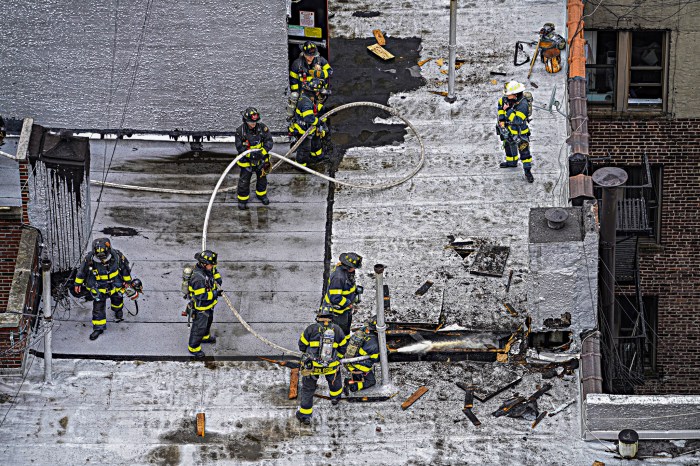After a 31-year-old woman was killed by a speeding driver on Atlantic Avenue, local leaders say the city must take immediate action to protect Brooklynites on the crash-prone thoroughfare.
On April 17, Katherine Harris was hit and killed by 27-year-old Erick Taxilaga Trujillo in the crosswalk at Clinton Street when the driver allegedly ran a red light at high speeds. Trujillo was arrested on the scene and charged with manslaughter, driving while impaired, and refusing to take a breath test.
The deadly crash was only the most recent incident on the avenue, and on April 19, a coalition of local politicians and community leaders penned a letter to Department of Transportation commissioner Ydanis Rodriguez urging him to implement safety improvements on Atlantic Avenue from Fourth Avenue to Furman Street as soon as possible.
Slowing traffic and prioritizing pedestrians on Atlantic Avenue
“Over the last decade, we have lost four neighbors to traffic violence on this very block, including the death this week of Katherine Harris,” reads the missive, signed by council members, state Senate and Assembly representatives, and civic leaders. “In the past 5 years, the corridor has seen 94 pedestrian injuries, 72 cyclist injuries, and over 500 crashes. For years, our community has demanded meaningful pedestrian safety and traffic calming efforts to make Atlantic Avenue safe.”

The coalition is asking DOT to slow the flow of traffic on the four-lane roadway and prioritize pedestrian safety by installing new mid-block traffic lights and crosswalks, redesigning existing crosswalks and extending curbs at intersections, and reimagining the space around the on and off-ramps to the Brooklyn-Queens Expressway.
DOT has received the letter, a spokesperson told Brooklyn Paper, and has no further comment on the comminuqué.
Atlantic Avenue is a Vision Zero Priority Corridor — meaning reducing pedestrian deaths is at the top of DOT’s list — but locals are frustrated by a perceived lack of action on the city’s part.
“We’re a Vision Zero priority that has been given zero priority,” said Kelly Carroll, executive director of the Atlantic Avenue Business Improvement District. “All of these deaths are totally preventable.”
Mid-block lights and crossings would help slow down drivers who speed down the avenue’s long blocks uninterrupted, especially those who exit the BQE onto Atlantic Avenue and continue driving at highway speeds, Carroll said.
Carroll said she has seen mid-block crossings work near her home in Bay Ridge, she said, in the commercial corridor along 86th Street between 4th and 5th avenues.
“They installed a mid-block crossing … and it’s such an enhancement,” she said. “Cars drive slow. Is there more congestion? Yes. But there’s a lot of people in the street, so you should be driving slow.”
Last month, the BID wrote a letter to the DOT, suggesting the agency temporarily close the eastbound entrance ramp from Atlantic Avenue to the BQE — “one of the worst-designed ramps in NYC” — and redesign the interchange as part of the larger-scale BQE redesign.
The group also supports less-intense traffic calming measures, Carroll said — red light cameras, speed cameras, and “good old-fashioned enforcement.”
The city completed a “Great Streets” traffic-calming project along a stretch of Atlantic Avenue in East New York and Cypress Hills in 2020, with Phase II of the project set to begin between Georgia Avenue and Rockaway Boulevard in 2018.
Since then, no further projects have been announced or carried out on the portion of Atlantic Avenue between 4th Avenue and Fulton Street, even as the number of crashes ticked up.
“Elected official after elected official, community group after community group has demanded traffic calming infrastructure and design changes that will make Atlantic Avenue safer for decades, and we just haven’t seen sufficient action,” said Council Member Lincoln Restler, who signed the letter to the DOT.
About six weeks ago, Restler led DOT representatives on a tour of the area, he said, to help them “focus their resources on interventions they can make.” The agency has committed to conducting a traffic study on mid-block crossings and lights this summer, he said.
Restler and Carroll also said the improvements would be a boon to local businesses and residents. The BID is always trying to beautify the corridor and improve quality of life, Carroll said, but they frequently have to report missing pedestrian crossing signs and wrought-iron tree pit guards mangled in car crashes.
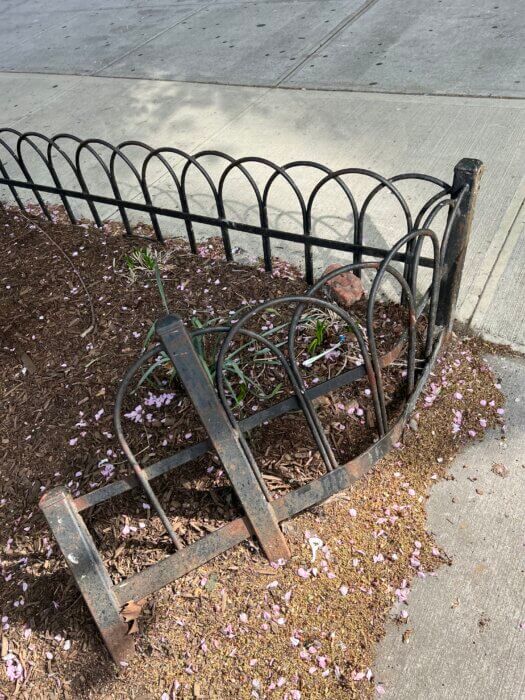
“We have so many different businesses, there’s a lot of things to do here once you do arrive, and they should be able to cross the street safely,” she said.
On April 29, Restler’s office will help lead an “Atlantic Avenue Pedestrian Safety Community Walk” to commemorate lives lost to traffic violence and rally for long-needed changes.
‘We can’t wait any longer’
“When fatalities occur, it tragically feels like Groundhog Day because there have been so many serious injuries and deaths along this corridor,” he said. “We can’t wait any longer. For whatever reason we’ve seen inaction for decades along Atlantic Avenue. Now is the time for substantial changes.”
According to Crashmapper, 18 people have been injured in 17 crashes at the intersection of Atlantic Avenue and Clinton Street, where Harris was killed, in the last five years.
Days after Harris’ death, her family created a GoFundMe to help pay for her funeral expenses and “legal fees associated with the family’s pursuit for justice in Katie’s wrongful death.”
“Our family is devastated by the tragic, violent, and senseless loss of our joyful, quirky, and loving Katie,” wrote Harris’ uncle, Miguel Ortiz-Crane. “In an instant, our lives have changed forever, and the world will never be the same. We know that no amount of money or even punishment of the perpetrator of this horrific act will ever bring Katie back.”
In just four days, Brooklynites donated more than $15,000 to the fundraiser, and Harris’ family stopped accepting contributions.
“We will continue to accept your love and words of support during this extremely difficult time,” Ortiz-Crane wrote in an update. “We have no words. We are just humbled and grateful.”


